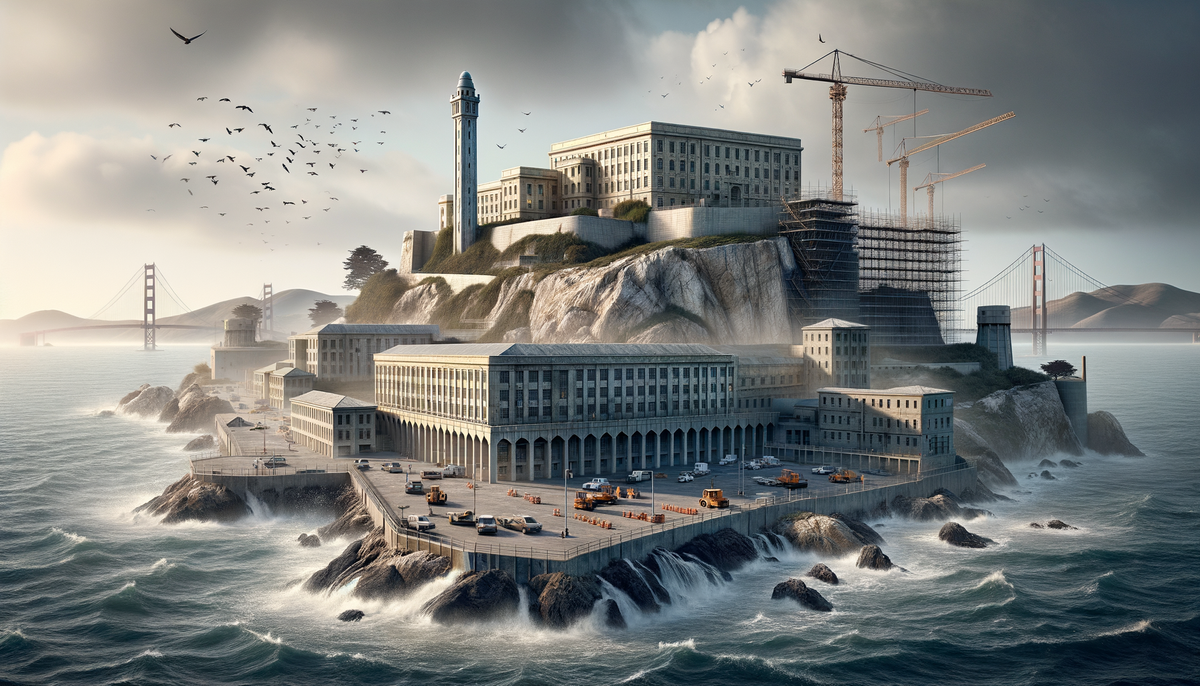Alcatraz: Rediscovering America's Most Notorious Prison
Discover the latest on Alcatraz Island as we explore its storied past and potential future as a federal penitentiary.

Alcatraz: Rediscovering America's Most Notorious Prison
Alcatraz has been a topic of fascination for many—its enigmatic history leaving much to be explored. As news increasingly swirls about alcatraz reopening, it beckons us to delve deeply into its past, present, and potential future.
The Historical Canvas of Alcatraz
Alcatraz Island, nestled in the heart of San Francisco Bay, bears a rich and multifaceted history. From its early designation as a military fortress to its infamous stint as America’s most well-known federal penitentiary, Alcatraz weaves a compelling narrative that is both intriguing and complex.
Military and Prison Evolution
The journey began when Spanish explorer Juan Manuel de Ayala recognized its naval potential in 1775, naming the island after local pelicans—"Alcatraces"[1]. President Millard Fillmore, recognizing its strategic importance, declared it a military reservation in 1850[2][5]. By 1859, the site housed military prisoners, providing a foreboding yet effective solution to the challenge of incarceration on the Pacific coast[4].
The island’s notoriety only increased as it transitioned into a military prison, housing Civil War prisoners and private citizens accused of treason by 1863[4]. Despite grandiose plans to revamp its infrastructure, much remained unfulfilled, save for some enhancements such as the parade ground[4].
The Federal Penitentiary's Grim Legacy
1933 marked Alcatraz’s transformation from a military stronghold to a federal penitentiary under the Department of Justice[4][5]. Its reputation as a fortress was only magnified by its natural defenses—icy waters with lethal undertows that thwarted many escape attempts, a factor leveraged by administrators to maintain order among inmates.
Notably, Alcatraz housed America’s most notorious criminals such as Al Capone, making it a focal point of media and public attention, which persists today in both fascination and fear[5].
Post-Penitentiary Era and Social Relevance
After ceasing operations as a prison, Alcatraz entered a new chapter in 1969, witnessing an occupation by the "Indians of All Tribes," a lesser-known yet pivotal movement advocating for Native American rights[3].
Today, Alcatraz stands as a National Park Service-managed historic site, drawing thousands of visitors eager to uncover its storied past[3].
The Recent Developments: A Political and Social Revival?
Recent narratives sparked by orders from prominent figures to reopen Alcatraz to house dangerous criminals have re-ignited public discourse, questioning the merits and risks of reinvigorating its solitary cells for modern justice[7]. In May 2025, reports by major outlets including CNN, KSL, and Fox News highlighted Trump’s directive to federal authorities to revisit Alcatraz’s potential as a federal corrections facility, a move that promises to reshape the island’s narrative yet again.
Implications for Professionals and Policy Makers
For professionals in the prison management domain, these developments suggest a plethora of logistical considerations. The integrity of historical infrastructure versus the needs for modern security technology creates a complex dichotomy. The question why was alcatraz closed echoes as a primer for these issues: the resource intensity of operations against economic and social justifications weigh heavily as decisions unfold.
Your Role in Alcatraz's Next Chapter
Explore these concrete mysteries and marvel at the tenacity of Alcatraz's story through its trials and transformations. Stay informed and participate in discussions that reshape our collective history.
Call to Action: Engage with us at Newsomix.com, where we bring light to the shadows of historical enigmas, and keep abreast of these potentially transformative developments. Visit the island, witness the stories—and add your voice to a history that refuses to stay silent.




